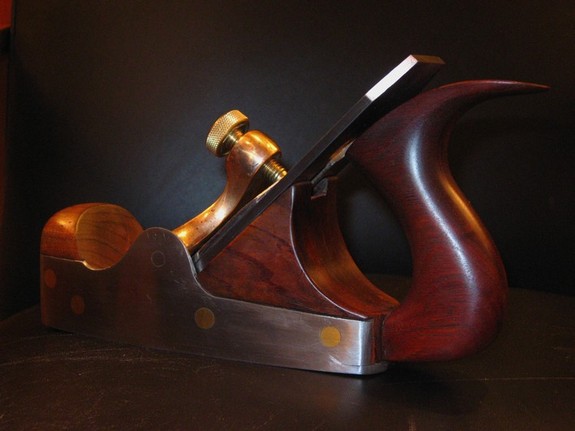bugbear":9v4p27dl said:
essexalan":9v4p27dl said:
I have a Mathieson 2 1/8" coffin smoother and a Norris #1 2 1/2", I use them a lot for smoothing and bought them before the prices went silly. Would not say they are any better for the job than a well set up Stanley/Record type but I enjoy using them, they just feel good in the hand if a little heavy for some.
IIRC someone in the USA (with a large range of infills and bedrocks to choose from) said a well set up and sharpened infill performed no better than a well set up and sharpened Bedrock.
But the infill's performance was higher when the tuning and sharpening
wasn't perfect. The performance is more intrinsic to the design than the tuning.
BugBear
Was this a user? One of our well-educated dealers over here suggested that he felt infills work a lot further into the sharpening cycle than stanley planes.
The equalizer in all off these planes (aside from them being tight and fitted well, all planes should be compared in good working condition, even if such a thing includes unsightly cosmetics) is the double iron. If it is prepared well on a functional stanley and well on a functional norris, they will both operate the same. Feel of the plane (weight, orientation) then becomes the differentiator.
Over here in the US where infills were not the norm, there was a stupid hierarchy that was pitched. It went something like this:
* If you have plain wood, you can use a stanley plane, but if the wood is a little harder you have to...
* buy a premium plane for the wood that's a little bit harder, but if it's really difficult figured wood, you have to...
* buy an infill because only infills can handle really difficult wood
And then the follow up instruction was "close the mouth and sharpen sharpen sharpen", I guess until you are literally doing nothing but sharpening and trying to push a 1 atom thick layer through the plane.
I hope that is dead, but that kind of nonsense had a lot to do with the first wave of infill value jumping - american buyers thinking they were getting a plane with superior capabilities. And then as americans, since we have such large houses made of kindling and vinyl siding, we all needed to have 50 of these types instead of 1. Thus, our dealers came over to your auctions and bought the planes right out from under you, which is a shame. For a while, a beech infilled norris that needed to be refitted would bring something like $750.
All of that said, if someone offered me one for free, I would take it without question and if it needed repairs, I'd make them. If nothing is broken, all of the elements are there to plane anything that can be planed, but the feel of an infill in short runs is nicer than stanley. It feels more like it goes on its own a little.

































